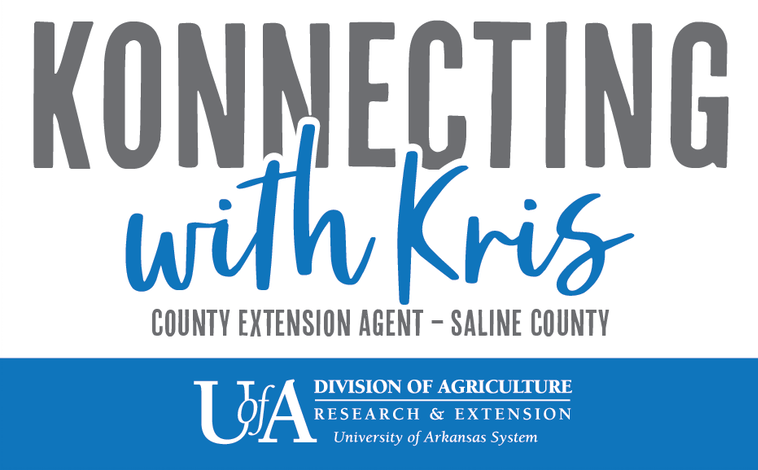Are You Prepared for an Emergency?
Contact
Kris Boulton
Phone: (501) 303-5672
Email: kboulton@uada.edu

University of Arkansas System Division of Agriculture
Cooperative Extension Service
1605 Edison Ave.
Benton, AR 72015

Konnecting with Kris Blog
Connect with Saline County FCS agent Kris Boulton.
Are You Prepared for an Emergency?
Is your family ready in the event of a natural disaster?
I started thinking about emergency preparedness. There was a time when many families went for three weeks without electricity, water, etc. after a natural disaster. What if a storm or tornado kept you from getting to the store or you were without electricity for several days or even weeks? Is your family prepared in the event of a natural disaster?
Does your family have a communication plan?
Take the time now to develop a communication plan and discuss and practice it with your family. Your preparation today can make a significant difference in how you and your family navigate through emergencies.
During the time of a disaster, there may be no access to food, drinkable water, and power for days or weeks at a time. Since food and water truly are necessary for life, planning for them in the face of pending disasters makes a lot of sense. Most sources recommend a minimum of three days up to a three-week supply of nonperishable food and water for each member of the family.
Build A Kit
After an emergency, you may need to survive on your own for several days. Being prepared means having your own food, water, and other supplies to last for several days. A disaster supply kit is a collection of basic items your household may need in the event of an emergency.
Basic Disaster Supplies Kit
If you are preparing for several people is can get expensive quickly. After you look at the list, plan to begin purchasing a few items that are needed each time you purchase home supplies so the total cost does not come out of one shopping trip.
Go here for a list of needed emergency items for your kit
To assemble your kit, store items in airtight plastic bags and put your entire disaster supply kit in one or two easy-to-carry containers such as plastic bins or a duffel bag.
A necessity of a basic emergency supply kit is to include the following items per person in your family:
Water (one gallon per person per day for several days, for drinking and sanitation).
In a disaster situation, it’s best to use bottled water if possible. Have at least a three-day supply of water and store at least one gallon of water per person per day. For a family of four that’s twelve gallons. A normally active person needs at least one-half gallon of water daily just for drinking.
Food (at least a three-day supply of non-perishable food)
When deciding what to eat, planning is the key. Plan menus to include as much variety as possible; three weeks’ worth of Vienna sausage, sardines, saltine crackers and beans will get old quick. Make sure you have enough calories to enable you to do any necessary work cleaning up after the disaster. Also, be sure to pack a manual can opener.
Maintaining Your Kit
After assembling your kit remember to maintain it so it’s ready when needed:
- Keep canned food in a cool, dry place.
- Store boxed food in tightly closed plastic or metal containers.
- Replace expired items as needed.
- Re-think your needs every year and update your kit as your family’s needs change.
Location in your Home
Where will you keep all these supplies? Find a place in your home where you can keep supplies handy. It may be a closet that you designate for emergency supplies, or a part of a pantry. It may be an area of your safe room or storm shelter. Check the supplies on a regular basis and rotate as necessary. That means checking the use by date on the packaging and replacing those that are about to expire.
Keep this kit in a designated place and have it ready in case you have to leave your home quickly. Make sure all family members know where the kit is kept.
Let’s hope a disaster does not happen in our area, but let’s be prepared in the event one does occur.
Learn more about being prepared for emergencies.